Progress Oman
Looking outward
The industrial sector in Oman is pinning its hope on rapid export growth to absorb capacity and contribute to the non-oil GDP

Oman’s industrial sector largely depends on the export market for growth, especially the Gulf and larger Middle East region, in view of a limited domestic market. Oman’s export development agency Public Authority for Investment Promotion and Export Development (popularly known as Ithraa) is taking several initiatives to enhance non-oil exports. These programmes include visits of trade delegations, participation in international exhibitions, business-to-business meetings and market studies in potential export markets.
Trade promotion
Ithraa has organised several trade visits this year, which include a business-to-business meet in Iran, trade visits to Singapore and Egypt and a major trade exhibition for Omani products in Saudi Arabia. The country’s non-oil exports grew by 8.4 per cent to RO4.12 billion last year, from RO3.8 billion in 2013. The growth in revenue was mainly contributed by a surge in exports of plastic and rubber products, which shot up by 23.4 per cent to RO356.3 million, while chemical products’ exports rose by 18.2 per cent to RO945.9 million. The United Arab Emirates topped the list of countries that imported Omani products last year, which was followed by Pakistan, Saudi Arabia, India and the United States. In fact, Oman’s major export markets include the Gulf Cooperation Council (GCC) countries, India, Iraq, China, Indonesia, and some European countries. With increased focus on the African markets and the neighbouring Arab countries, Ithraa has set an ambitious target of 15 per cent growth in non-oil exports this year.
Non-oil exports
Although non-oil exports showed a robust growth, the overall export of the country fell by 5.7 per cent to RO20.46 billion last year from RO21.70 billion, mainly on account of a plunge in oil and gas prices in international markets and re-exports. Higher exports from gas-based industries, especially aluminium smelter, petrochemicals, fertiliser and iron and steel plants are helping the Sultanate to enhance its non-oil export base. The export of steel products, polypropylene, food, marble and stone products have seen good growth in recent years. With the recent government move to ban exports of raw minerals, the country will achieve a better growth in mineral export in the long-run as value added products will fetch better earnings.
An important targeted market for Omani exports is Singapore and the authorities are going to conduct a market study to find out the acceptance of Omani products.
Omani products’ exhibitions are helping companies to enhance exports, especially within the region. A recent exhibition on Omani products in Saudi Arabia attracted more than 130 companies, which was an ideal platform to introduce high quality Omani products and vital Omani industries to companies and consumers in Jeddah. It was jointly organised by the Public Establishment for Industrial Estates (PEIE), Ithraa, and Oman Chamber of Commerce and Industry (OCCI).
The exhibition in Jeddah aimed at building upon the success of the previous exhibitions held in Dubai, Doha and Riyadh, through presenting an ultimate platform to introduce high quality Omani products to the visitors. Now the country is focusing on some African countries. In the last couple of years, Ithraa has taken a series of major initiatives to enhance exports to some of the African countries, which mainly include Ethiopia, West Africa, East Africa and Tanzania.
Enhancing competitiveness
Major initiatives were also taken to conduct market surveys on competitiveness of Omani products in these markets and visits of Omani trade delegation with targeted sectors for business-to-business meetings. The Sultanate’s competitive edge lies in products like minerals, petrochemical and plastics, fish and agricultural products and the country exports to 140 countries across the world. The perception of better quality for Omani products is also an added advantage. Oman is also trying to utilise Greater Arab Free Trade Area (Gafta) and focus on neighbouring Arab countries by organising exhibitions and matchmaking meetings.
However, the ability of Omani companies to compete in export market has taken a beating with the recent increase in the price of natural gas sold to industries located within the industrial estates. Oman government doubled natural gas price to 41 baizas per standard cubic meter from 20.5 baizas with effect from January, 2015 and an annual increase of 3 per cent thereafter. The impact is more on natural gas intensive industries like cement, ceramic tiles, steel and glass manufacturing since a sizable portion of their manufacturing cost is for fuel.
When the Ministry of Oil and Gas revised natural gas price sold to five major gas-based industries – Oman India Fertiliser Company (Omifco), Oman Methanol Company, Sohar International Urea and Chemical Products, Jindal Shadeed Iron and Steel and Sohar Aluminium- in early 2014, relatively small industries located within the industrial estates were spared. Oman government last year signed agreements with five large industries (which consume 15 million cubic meters of gas per day) for gradually increasing natural gas prices to $3 per million British Thermal Unit (Btu) by 2015, which is indexed to inflation.
SME development
Oman is now pinning hope on small and medium industries in playing an important role in strengthening its export base. As part of the initiative, the government has devised a comprehensive programme, especially incentives for small and medium entrepreneurs and massive investments in industrial estates and free trade zones in different parts of the country. The industrial sector, which mainly includes mining, quarrying and manufacturing, in Oman has achieved a 3.8 per cent growth at RO5.71 billion last year. However, the manufacturing sector alone rose by merely 0.4 per cent to RO3.15 billion. In fact, the industrial activities contributed 18.1 per cent in the gross domestic product of Oman in 2014. However, the contribution of manufacturing sector alone was around 10 per cent.
Industrial estates
Industrial estates are an important component of the Sultanate’s evolving economy. They have been developed to ensure a balanced economic growth. The country’s industrialisation drive was mostly facilitated by the Public Establishment for Industrial Estate (PEIE) which today has seven prime industrial estates under its umbrella namely Al Rusayl, Sohar, Al Buraimi, Raysut, Sur, Nizwa, Sumail, in addition to Knowledge Oasis Muscat (KOM), a technology park run via public-private partnership and Al Mazunah Free Zone, and the recently announced Ibri Logistics Area. The total area of these estates exceeds 90 million square metres. A majority of the Sultanate’s industrial production takes place in its industrial estates.
The Sultanate’s industrial parks accommodate manufacturing facilities, light and consumer industries. Oman Cables Industry, Oman Fiber Optic Company, Sohar Aluminium, Voltamp Energy among the many that have been established in various industrial estates have changed the industrial landscape in Oman. Some of the ‘Made in Oman’ products now enjoys international recognition. For instance, Voltamp is engaged in the manufacturing of a wide range of transformers and switchgears through its four factories, all located in the Sultanate. With over 25,000 installations in the Middle East & North Africa (MENA) region and partnerships with the best-in-class global leaders, Voltamp Group has become one of the leading companies in the MENA region in manufacturing and marketing an extensive range of power and distribution transformers, low voltage switchgears and packaged sub-stations.
PEIE has attracted nearly RO550 million local and foreign investment in its various industrial estates, and around 59 projects during the same period. The size of workforce in the various estates has increased by 12 per cent during the first half of 2014. Existing projects in PEIE estates have generated around 4,000 job opportunities. PEIE aspires to offer more than 27,000 new job opportunities in the coming three years. There are currently 228 projects under construction, which are expected to commence production during 2015 and 2016. These projects are expected to generate more than 10,000 new job opportunities. Additionally, there are other 436 projects that have been allotted with lands and are in the localisation process. These projects are expected to be localised before the end of 2015 and will generate more than 17,000 job opportunities post the commencement of production operations, which is expected to take place before the end of 2017.
In expansion mode
Specialised studies will be conducted to set up new estates in various governorates of the Sultanate, including PDO’s concession areas in Marmul and Fahud. A joint team is working on this matter. Thumrait in Dhofar Governorate is also under consideration, as Raysut Industrial Estate has touched high occupancy rate. Moreover, PEIE is considering Al Wusta, Al Dhahirah, Al Batinah and Al Buraimi Governorates in addition to Al Mudhaibi Industrial Estate, which is currently under construction. On the recently announced Ibri Logistics Area, PEIE has already signed consultancy agreements with a leading engineering consultancy firm. This integrated logistics project is set to be a milestone for the economic development in Al Dhahirah Governorate. Located in the Wilayat of Ibri in Al Dhahirah, the project will be developed on an area estimated at 3 million square metres, and will serve as a site for logistics activities comprising storage, shipping, exporting and supplying. Strategically located between the United Arab Emirates and Saudi Arabia, the project will take into account the activities surrounding the area including the international road to Saudi Arabia, railway and future industrial estates. The master plan of Ibri Logistics Area comprises storage units, light industries, administration building, and station for loading and unloading goods linked to the national railway project through Ibri station, among other services related to governmental entities involved in such projects; in addition to the infrastructure, internal roads, irrigation and landscaping. The project will be implemented in various phases upon completion of the final design of the project which is expected to be completed in February 2015.
The expansion programmes of some of the gas-based industries at Sohar, the Sultanate’s major industrial zone, are expected to further strengthen non-oil sectors in the near future. For instance, the state-owned Oman Refineries and Petroleum Industries (Orpic) is planning to further boost the industrial base in Sohar with another petrochemical complex. Orpic is progressing with its plans to build Liwa Plastics Project (LPP). With the completion of LPP, Orpic will be producing a total of 1.4 million tonnes of polyethylene and polypropylene a year by 2018 – all for export market. The commissioning of a steel melt shop last year by Jindal Shadeed was also a shot in the arm for the government to strengthen non-oil exports. Jindal Shadeed Iron & Steel, part of the $12 billion-Indian steel conglomerate Jindal group, has commissioned its two million tonne per annum (MTPA)-capacity steel melting shop within its large complex in Sohar last year. The steel melting shop, which was set up with a capital expenditure of $400 million, will produce billets, blooms and round products, mainly for regional markets.
The development of a host of industries, including Sohar Aluminium, Sohar International Urea and Chemical Industries, Aromatics Oman, Vale Oman, Oman Polypropylene, Shadeed Iron and Steel, Oman Methanol and L&T Modular Fabrication Yard, is a manifestation of the involvement of foreign multinationals in the country’s industrialisation drive, be it as a technological partner or a joint venture investor. This also reflects the level of confidence among some of leading international giants like Brazilian mining conglomerate Vale in Oman. The government’s commitment in developing a vibrant industry is evident from the fact that these industries are partly promoted by Oman Oil Company (OOC) – the investment arm of the government.
After the massive development of Sohar industrial area that attracted over $20 billion investment, now the focus is on Duqm. A series of major industries, including a large refinery and petrochemical complex, are taking shape in the newly emerging port city. The development of the port will boost the Sultanate’s exports of mineral products and petrochemicals. Oman Oil Company alone is investing $15 billion for developing various projects, including a mega refinery at Duqm.
-
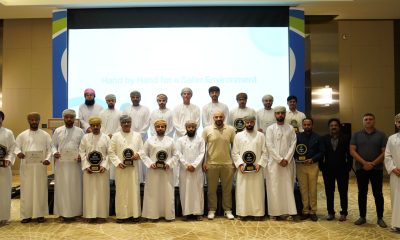
 Banking & Finance2 weeks ago
Banking & Finance2 weeks agoOman Oil Marketing Company Concludes Its Annual Health, Safety, Environment, and Quality Week, Reaffirming People and Safety as a Top Priority
-

 Economy2 months ago
Economy2 months agoMaal Card: What Oman’s New National Payment Card Means for Everyday Users
-

 News2 months ago
News2 months agoSheikh Suhail Bahwan, Chairman of Suhail Bahwan Group, Passes Away
-

 News1 month ago
News1 month agoOIG Appoints New CEO to Lead Its Next Chapter of Excellence
-
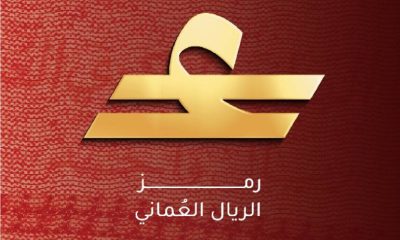
 Economy2 months ago
Economy2 months agoOman Unveils Official Omani Rial Symbol in Landmark Move to Boost Global Currency Presence
-
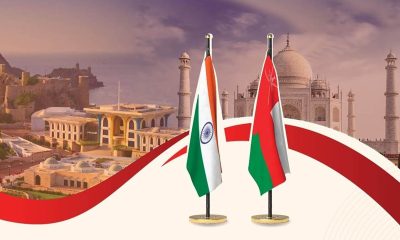
 News1 month ago
News1 month agoReport: How India & The Middle East Are Exploiting Immense Economic Synergies
-
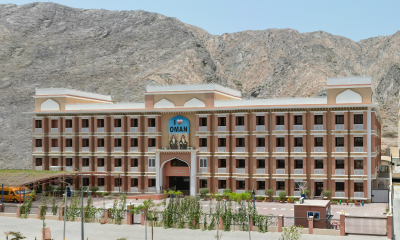
 Uncategorized1 month ago
Uncategorized1 month agoOman’s ISWK Cambridge Learners Achieve ‘Top in the World’ and National Honours in June 2025 Cambridge Series
-
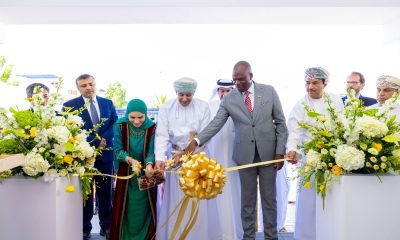
 Trade1 month ago
Trade1 month agoConsulate Office of the Republic of South Africa opens in Muscat, enhancing bilateral relations




























You must be logged in to post a comment Login